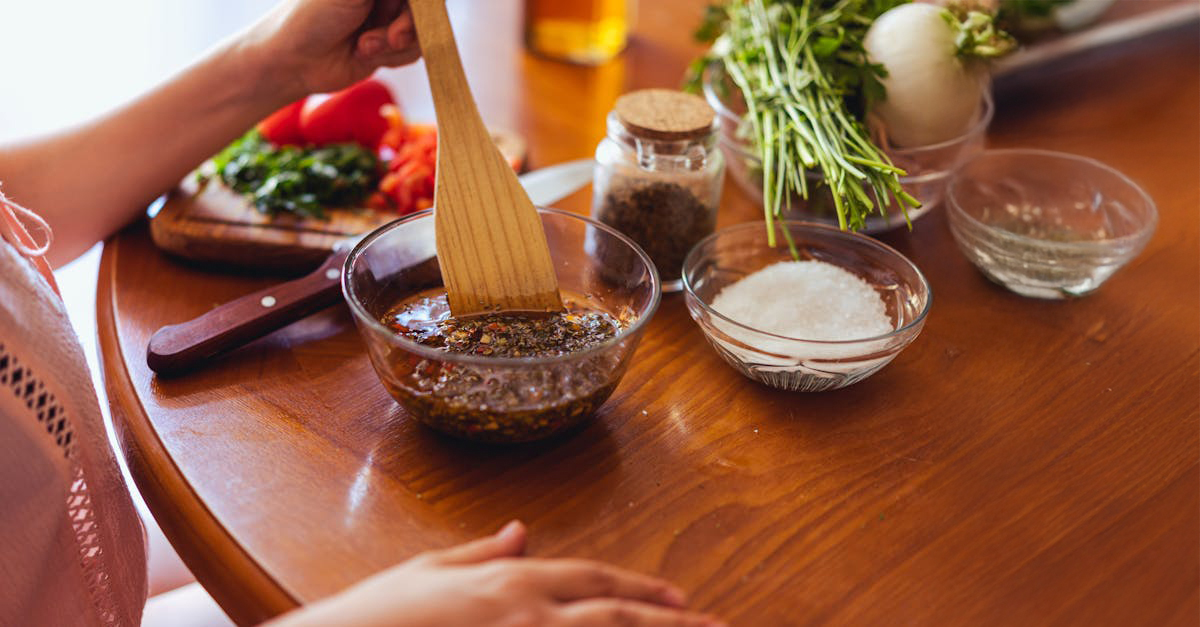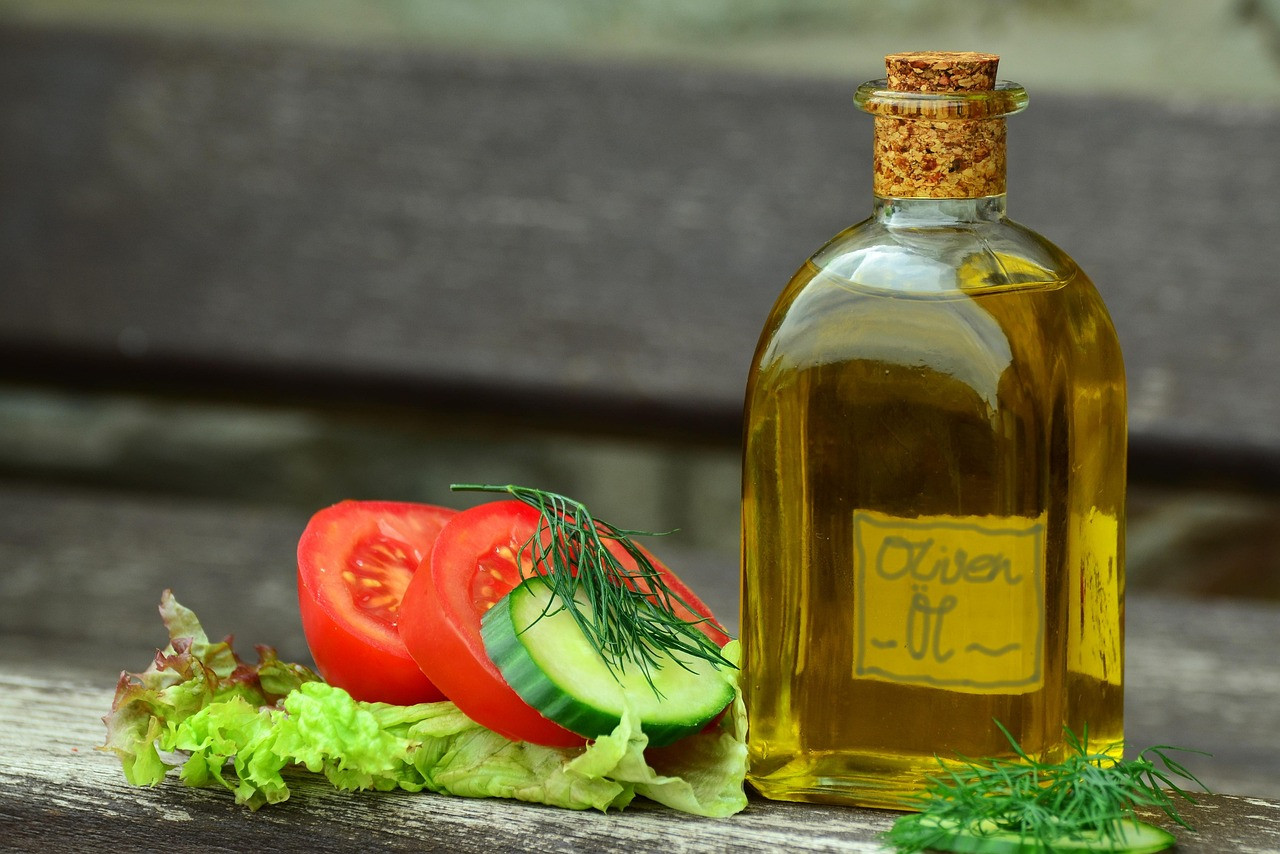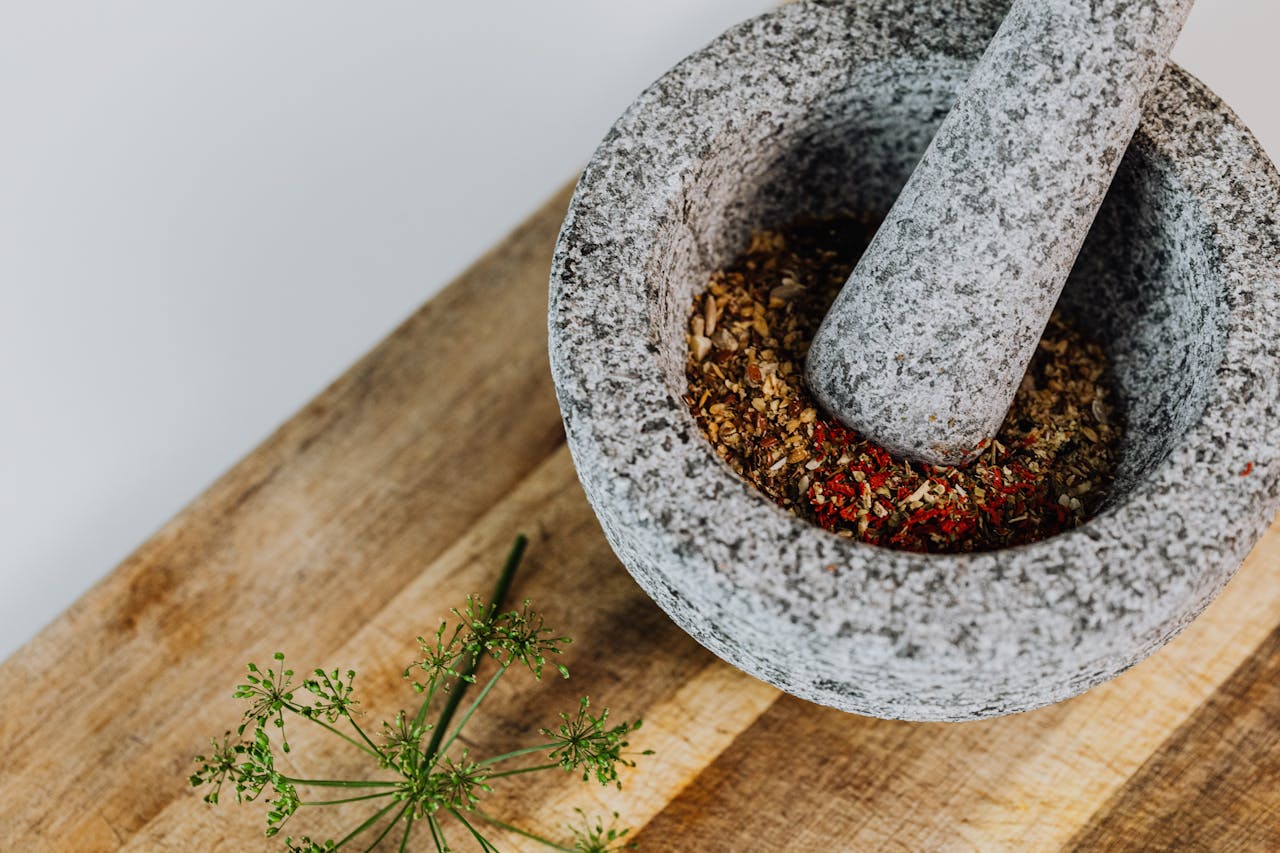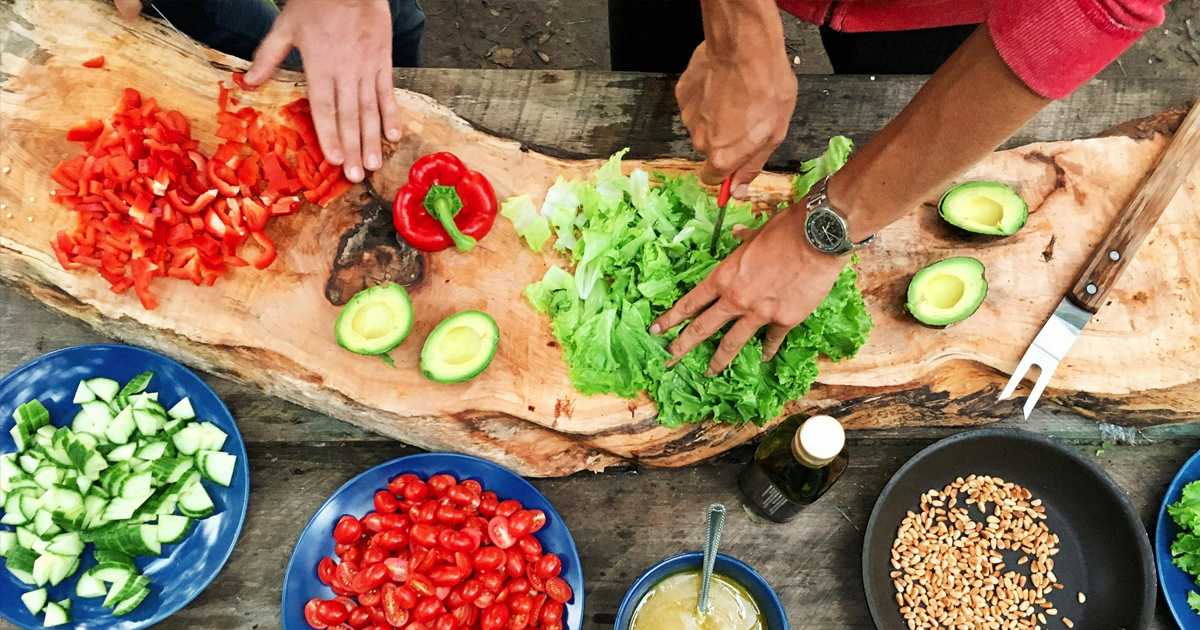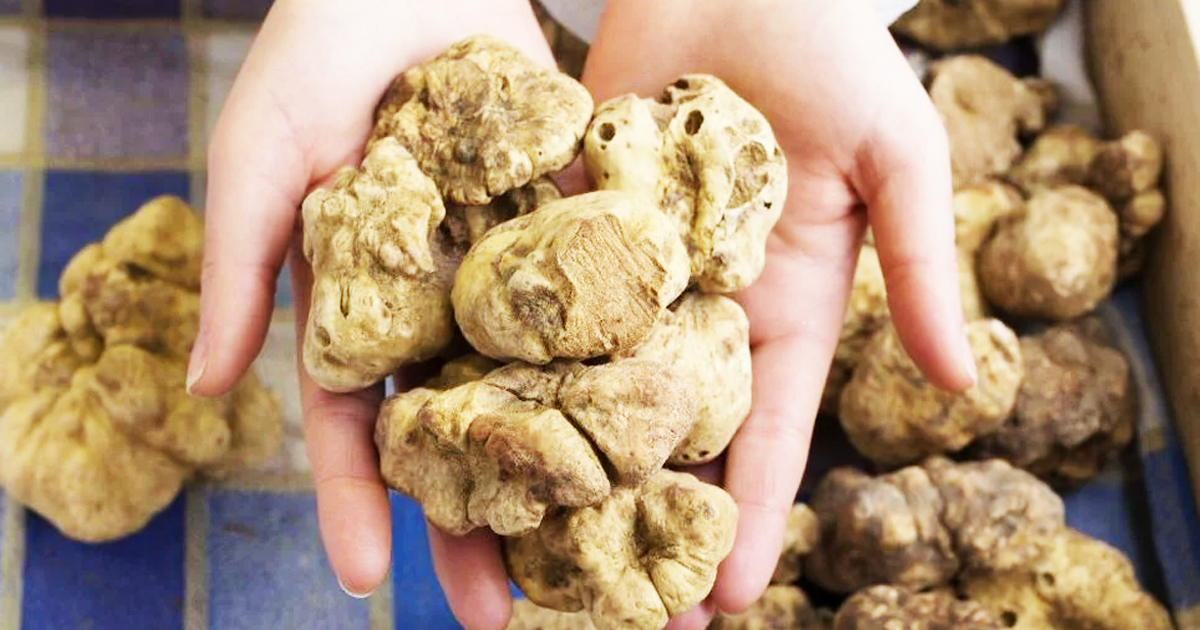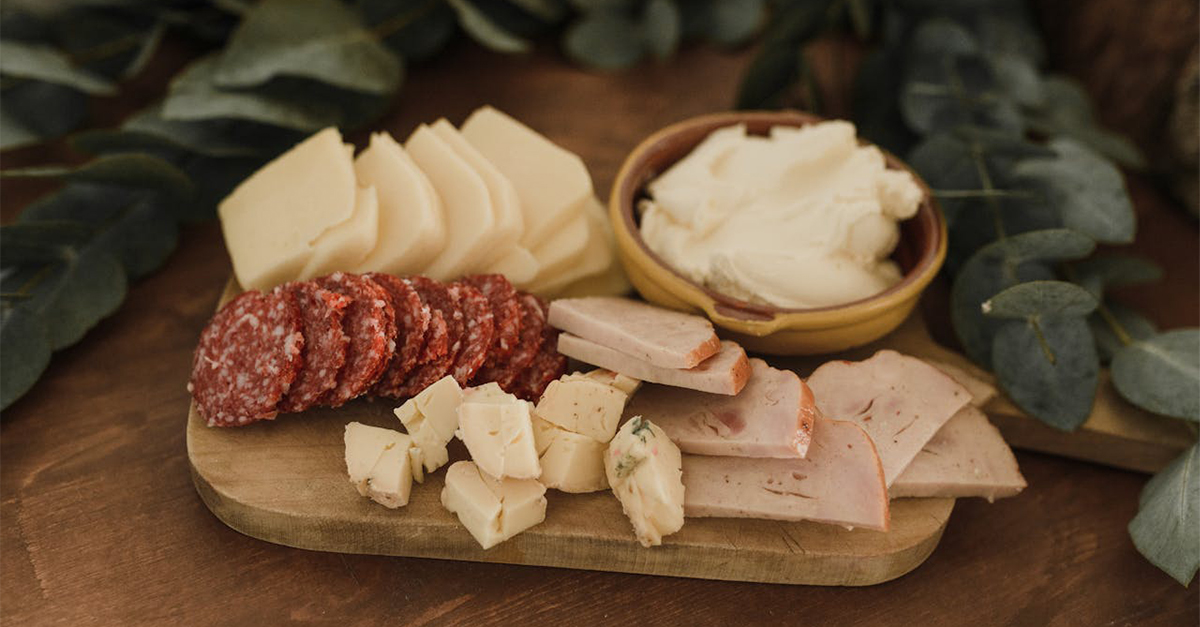Store-bought salad dressings are convenient, but they usually come with a laundry list of preservatives, stabilizers, and hidden sugars. The fact of the matter is, with a few basic pantry staples, you can make your own tasty, healthy dressings in minutes. This will save you money and just as importantly, give you complete control over the flavor and quality of your salad.
Start With A Solid Oil And Acid Base
Grade one, page one: every good vinaigrette starts with a simple ratio: three parts oil to one part acid. Olive oil is the classic choice, but avocado oil, walnut oil, and grapeseed oil all bring their own unique twist to the table. For acidity, use balsamic vinegar, apple cider vinegar, red wine vinegar, or even a citrus juice like lemon or lime. This foundation paves the way to limitless variations.
Use Mustard, Garlic, Or Herbs To Add Flavor
To give your dressing more depth, stir in a spoonful of Dijon or whole-grain mustard. This works as an emulsifier and gives the dressing a savory tang. Fresh minced garlic or shallots bring a pungent kick. Fresh or dried herbs give the dressing an aromatic quality. Think basil, oregano, thyme, or parsley depending on the season and what kind of salad you’re making.
Natural Sweeteners Only, Please
Your typical bottled dressing relies heavily on high fructose corn syrup or artificial sweeteners. You can get the same balance of flavors using natural alternatives. A drizzle of honey, a splash of maple syrup, or a bit of mashed-up fruit like ripe strawberries or mango can give you just as much sweetness—more, even! Start small and adjust gradually to taste.
 Barring family International, Unsplash
Barring family International, Unsplash
Don’t Be Afraid To Add Creaminess
If you want a creamy dressing like ranch or Caesar, these are also easy to make at home. Use Greek yogurt, sour cream, or mayonnaise for your base, and then add in your usual suspects: garlic, lemon, Parmesan, anchovy paste, or herbs. Blending these ingredients gives the dressing a perfect texture without having to throw in all sorts of additives or stabilizers.
A Custom Dressing For Every Meal
Once you nail down the basics, your dressings can be made to match any flavor profile you want. Add soy sauce and sesame oil for an Asian-inspired twist, or tahini and lemon for a Middle Eastern feel. A spoonful of chimichurri or pesto can be thinned out with oil to make a herbal dressing that’s perfect for grilled meats or robust grain salads.
Keep Tabs On Sugar And Sodium Intake
Pre-made dressings are often quite high in sodium and added sugar. When you make your own, you’ll dictate exactly how much salt and sweetener go in. You’ll also avoid potential hidden allergens or preservatives, which is welcome news for those of us with dietary restrictions. Reading labels is helpful, but skipping the label altogether is better.
Dress Just Before Serving
Homemade dressings often separate over time because they don’t have the emulsifiers of industrial salad dressing. But that’s no problem at all. Just shake or whisk the dressing right before serving. A small mason jar or salad dressing shaker will make short work of it. Store your leftovers in the fridge for a week max, and always taste before you reuse. The flavor of fresh ingredients can change over time.
Save Your Favorites And Make In Bulk
With the help of the principles we've been talking about, your home-made dressing won't be just a random concoction. Once you find a dressing you really like, you can write down the recipe, multiply the ingredients, and keep it in a jar for the week ahead. This’ll save you time and help you stay consistent with the healthy eating routine that you’ve implemented. A few trusty homemade dressings can be just what’s needed in any weekday lunch or simple dinner.
You May Also Like:
Ultraprocessed Foods You Need To Avoid
Nine Condiments You Should Always Have In Your Kitchen

